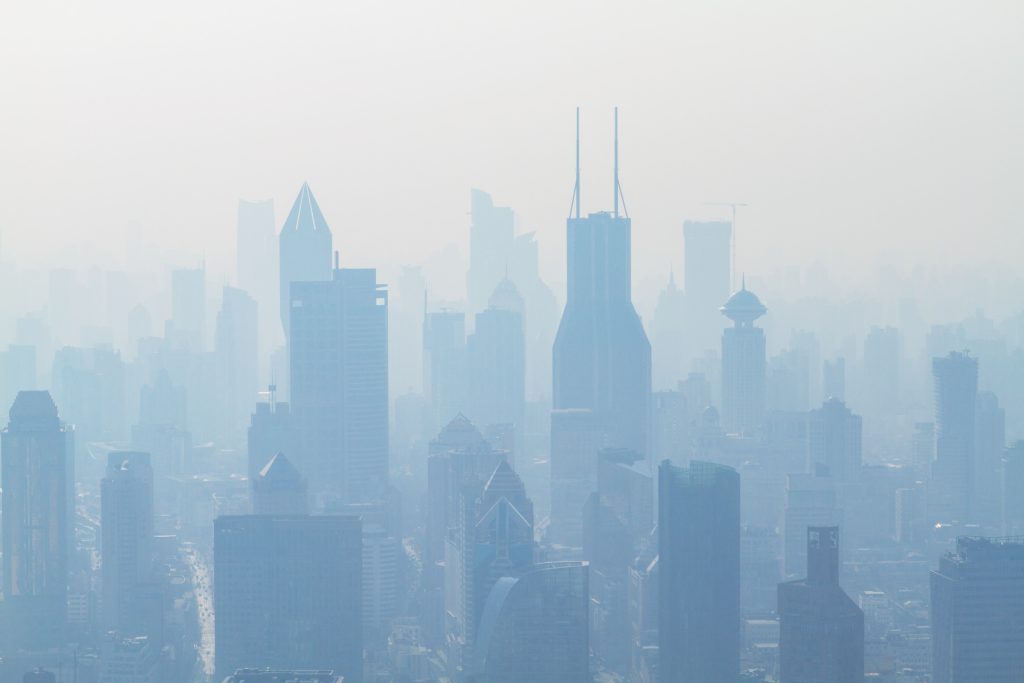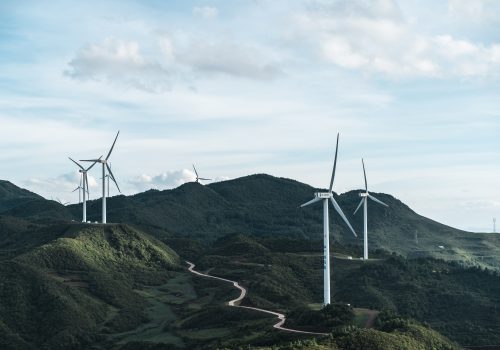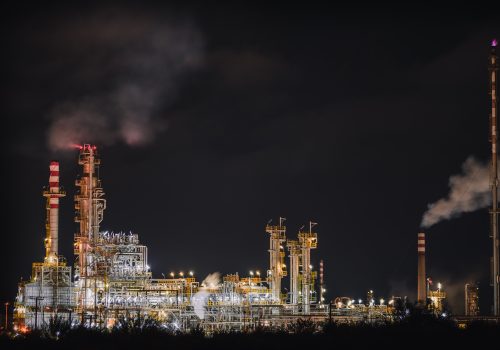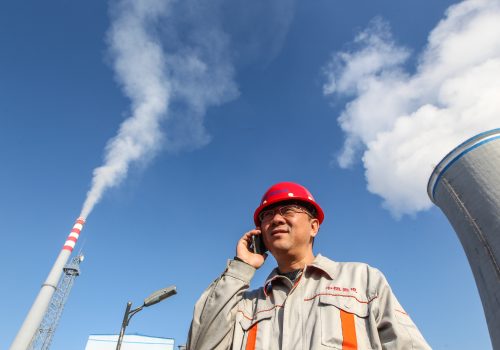Greater uptake of natural gas has helped substantially reduce urban air pollution in Beijing, notorious until a few years ago for its apocalyptic, grey, smog-filled skies. The Chinese capital’s example offers a template for other developing world cities that face a similar challenge. By switching from coal, the dirtiest and most polluting energy source, these cities too can lower urban emissions, reduce harmful health outcomes, and dramatically improve quality of life, particularly among young children suffering from asthma.
While natural gas is demonstrably effective at reducing local emissions, more work is needed to reduce its global climatological impacts. Developed world natural gas exporters, including the United States, Qatar, Australia, and Canada, meanwhile, have a responsibility to constrain global greenhouse gas (GHG) emissions by limiting methane flaring and venting, and by capturing carbon in underground storage. Similarly, natural gas consumers, meanwhile, should consider not only the health benefits of reduced local air pollution, but also the climatological impacts of production abroad. Ahead of COP28 discussions this year, the United States, China, and other countries should encourage responsible natural gas production as a solution for reducing global emissions and urban air pollution.
Beijing’s improved air quality
Beijing’s local air quality has improved nearly continuously since 2013 as particulate matter (PM) 2.5 levels decreased. The US Environmental Protection Agency defines PM 2.5 as “fine inhalable particles, with diameters that are generally 2.5 micrometers and smaller.” These particles can cause serious health problems after inhalation. PM 2.5 may be particularly harmful for children, and early-life exposure is associated with an increased risk of childhood asthma.
Publicly available measurements of particulate matter concentration from the US embassy in Beijing show that the city’s average annual air quality index (AQI) fell sharply from 2013 to 2019, the last pre-COVID year in Beijing. Higher AQI values correspond to greater air pollution.

(Source: U.S. State Department, author’s calculations)
Several factors have contributed to improving air quality scores. Lauri Myllyvirta of the Centre for Research on Energy and Clean Air identifies key drivers: implementing strong emissions standards and using of emissions-control technologies for power plants and high-emissions industries; eliminating coal-based heating and cooking in homes; and slowing growth in coal consumption.
An embrace of natural gas also undoubtedly played a major role in enabling Beijing to reduce local coal production while maintaining energy access. The city has shuttered over 2 gigawatts (GW) of local coal plant capacity, beginning in 2014, while opening nearly 6 GWs of cleaner natural gas capacity.

(Source: Global Energy Monitor Global Coal Plant and Global Gas Plant Trackers, author’s calculations)
As local demand for natural gas rose, Beijing sourced more supplies from abroad. Pipeline natural gas imports along the Central Asia-to-China Pipeline (CACP) were particularly important. According to the Chinese National Petroleum Company, natural gas service enabled the shutdown of four thermal coal plants in 2015. The CACP’s Line C, which entered service in 2014 and has a capacity of 25 billion cubic meters (bcm) per year, undoubtedly played a role. The CACP’s A and B lines came online in 2009 and 2010, respectively, and have a combined capacity of 30 bcm per year.
Liquefied natural gas (LNG) imports also played an important role in Beijing’s clean air transformation. From 2013–2018, China opened five LNG import terminals near Beijing, with capacity just under 40 bcm. In addition, the increased adoption of natural gas in the adjacent Tianjin municipality and Hebei and Liaoning provinces have also helped reduce coal pollution in the greater Beijing area. It’s clear that natural gas imports, especially LNG, have played an enormously important role in reducing Chinese urban pollution. China’s total natural gas imports more than quadrupled from 2011 to 2021, while its LNG imports rose from just under 17 bcm to 110 bcm in this period.

(Source: BP Statistical Review, author’s calculations)
Yet China’s victory over urban air pollution has been costly. The central government has often simply transferred coal generation from its biggest cities to less-populated locations. Therefore, while urban air pollution has declined dramatically since 2010, China’s emissions from steam coal used to make electricity have risen by 28 percent. China’s strategy has been to use natural gas selectively, reducing air pollution in politically important urban areas while increasing emissions in other parts of the country.
China also negated the environmental benefits of coal-to-gas switching by turning to Turkmenistan, almost certainly the world’s most methane-intensive producer. While coal produces far more carbon emissions than natural gas, methane emissions from natural gas production undercut that advantage. Methane has a shorter lifetime in the atmosphere than carbon dioxide, but is more efficient at trapping radiation. China sources most of its Central Asian natural gas imports from Turkmenistan, which has a methane intensity of production of 1.37 kilograms of methane per gigajoule–a level more than six times higher than in the United States even before the IRA incentivized producers to slash methane output.
Worryingly, Turkmenistan has not agreed to any concrete steps to reduce methane emissions, despite growing evidence it will secure another pipeline deal with China. If a new, 30 bcm-per-year Turkmenistan-to-China pipeline comes online and Turkmenistan’s current methane emission rate remains constant, the pipeline’s raw methane content could exceed the methane emissions of the entire US LNG complex, which boasts an export capacity of around 150 bcm a year. If Turkmenistan’s methane emissions are not abated, China’s procurement of Central Asian gas may reduce local air pollution in its cities, but will ultimately raise global emissions and associated costs.
Natural gas should be a tool for both urban air quality and climate
While the overall impact of natural gas on the climate is currently somewhat ambiguous, due to the role of methane, there need not be a tension between urban air quality and decarbonization. While there is strong evidence that replacing coal with natural gas can help reduce urban air pollution in China, India, and other economies across the Indo-Pacific, natural gas’ climate impacts can be significantly mitigated.
LNG producers from the United States and elsewhere must reduce methane emissions by limiting flaring and venting, which contribute to GHG emissions. US natural gas producers are already cutting methane emissions ahead of implementation of a methane fee under the Inflation Reduction Act. More effort is needed to reduce US natural gas GHG emissions, including by storing carbon, but the world’s largest natural gas producer and LNG exporter is on the right path.
Natural gas production does incur carbon and methane emissions—but it’s also a tool for reducing air pollution and asthma rates in urban population centers in developing countries. Moreover, if methane can be abated, natural gas can reduce global emissions when replacing coal.
The US and other natural gas producers must therefore accelerate methane and carbon emissions reductions. Meanwhile, natural gas importers, including China, must also pressure producers to limit methane and carbon emissions. Washington and Brussels are working to ensure that responsible natural gas production and LNG exports serve as a climate bridge fuel and a tool for urban emissions reduction, but they will need cooperation from Beijing and other important natural gas stakeholders.
Joseph Webster is a senior fellow at the Atlantic Council and editor of the China-Russia Report. This article represents his own personal opinion.
Meet the author
Related content
Learn more about the Global Energy Center

The Global Energy Center develops and promotes pragmatic and nonpartisan policy solutions designed to advance global energy security, enhance economic opportunity, and accelerate pathways to net-zero emissions.
Image: Air pollution in Shanghai





